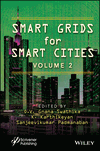Design and Construction of Unbiased Digital Dice
Summary
The digital dice work is a work that will display numbers from 1 to 6 at random. When playing games like snakes and ladders or Monopoly, this is an alternate gadget that may be used to substitute regular dice. A 555 timer is used to generate the clock pulse, which is wired in the astable mode at a frequency of about 50 Hz. The decade counter's outputs are attached to six LEDs, which light up at random when the push button is pressed, according to the number assigned to each LED.
The circuit uses a 9V battery as its power supply which is coupled with a 7805 IC, which works as a voltage regulator and drops down the incoming voltage to 5V. The clock pulse generated by the 555 timer IC is used as an input for CD 4017 Decade counter IC which in turn light up a random LED for each push of the button.
The regular dice can be replaced with this work which may become biased due to certain external conditions and hence might spoil the fun of the game being played. During these pandemic times people were confined to their homes and had indoor and dice games as their only measure of recreation; thus this work might be helpful in the current phase of home isolation or lockdown.



